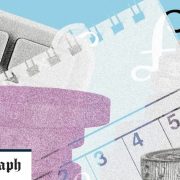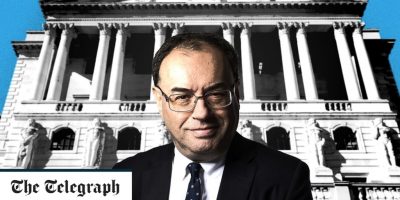Inflation ticked down this week but it remains above the official target and interest rates are still expected to rise. Bond investors must be wary.
Not all bonds are made equal, and some fare far better than others when interest rates rise. Investors can pick funds that invest only in specific types of bond, but run the risk of getting the call wrong.
“Strategic” bond funds are one potential solution. Managers can choose from a wide range of types, from government bonds to riskier high-yield corporate ones.
Telegraph Money spoke to Eoin Walsh, one of the six managers of the TwentyFour Dynamic Bond fund, about how Nationwide Building Society allowed him to double his money and why Britain represents good value for bond investors. The fund is on our Telegraph 25 list of top portfolios.
How do you invest?
Our primary objective is to produce an attractive level of income that is stable and repeatable. We’re not forced to have exposure to any particular types of bond, so we invest where we think the best value is.
Last year we were mostly invested in riskier corporate, high-yield and emerging market bonds. This year there is greater volatility and we have been investing more of the fund in lower-risk bonds, particularly those with low duration [low-duration bonds are less sensitive to central bank interest rates, so do not fall as far in value when interest rates rise].
We will end up owning a lot more government bonds, at between 30pc and 40pc of the portfolio. We hedge against movements in currency exchange rates [using complex derivatives, a form of insurance]. We can also hedge against specific risks, such as a political event.
Where is the fund invested?
One area we have continued to hold a significant exposure to is Britain. Since the referendum there has been a “Brexit premium” that has never really gone away: Sterling corporate bonds offer 1-1.2 percentage points more yield than European equivalents, even if it’s the same kind of risk.
We look at names where even a poor Brexit won’t be a big event. Take Nationwide Building Society: it might have a reduced quarter of earnings, but it won’t be an event that affects its bonds. Picking up the Brexit premium, for those kinds of companies, makes a lot of sense.
Why are Australian government bonds your biggest holding?
The only area in developed markets we found where we could hold slightly longer duration [more interest rate sensitive] government bonds was Australia, as no interest rate rises are expected in 2018.
A chunk of the fund is in bank bonds. Why?
It’s a mixture of British and European banks. We felt the Eurozone had begun to recover from the financial crisis, and since 2012‑13 a number of banks have provided a lot of value to investors. Banks have increased their levels of cash compared with the risk taken on since the crisis, and are in a fundamentally different position.
There are maybe 1,000 banks in Europe. We pick carefully and typically own bonds from 20 names, with significant investments in each.
Credit:
Chris Bowie
Is the fund’s income sustainable?
We never give a target for income. We aim for it to be attractive for the current environment. When we think the income is there to be harvested, we will add risk and do that. But we can lower the yield when we want to protect against volatility.
The current 4.5pc yield could go lower, as we’re going to be holding more government bonds, although they should begin to offer higher yields.
What have been your best and worst investments?
The best was a unique type of bond offered by Nationwide. It paid 10.25pc, and including capital appreciation the total return has approached 100pc. The worst were a number of infrastructure companies in the developing world. They became over-indebted and lost the market’s confidence. We were slow to exit.
How are you paid?
A base salary, then a bonus based on the company’s profitability. There’s no performance fee on the fund.
Is your own money in the fund?
Yes. Around 70pc of my total wealth is in a variety of TwentyFour funds.
What would you have done if you hadn’t been a fund manager?
An architect.
In focus: Coventry Building Society
Coventry Building Society has a capital ratio – a measure of a bank’s cash relative to its risky assets – of 34pc, compared with the UK market average of around 12pc to 14pc.
It is probably one of the safest financial institutions in the world, and from a quality point of view you will struggle to find a bank, insurer or bond in the world safer than it.
Credit:
Robert Convery/Alamy
But you still get a decent interest rate for holding the bonds, of around 3.5pc. They also now have very short duration, so will not be significantly affected if the Bank of England increases Bank Rate.
If you’re looking for something that pays a decent income, and that isn’t exposed to risk from interest rates, it’s very difficult to look past it as somewhere to park money and be sure of what you’re going to get.
Coventry is basically a mortgage business, and is very conservative. Its average loan is for around 55pc of the value of a property.
The number of loans on its books on which borrowers have stopped paying is tiny. It’s incredible.
It’s also a building society, and so is much less likely to suddenly do something totally different, and as a mutual – a private company that is owned by and run for its customers – it’s not being run for the benefit of shareholders.
It also issued the bond when it didn’t really need to, meaning there’s no reason for it to leave it outstanding when it reaches maturity.
The firm is an example of the benefits of retaining earnings and not paying dividends, which allows it to retain and grow its cash base.
























Comments